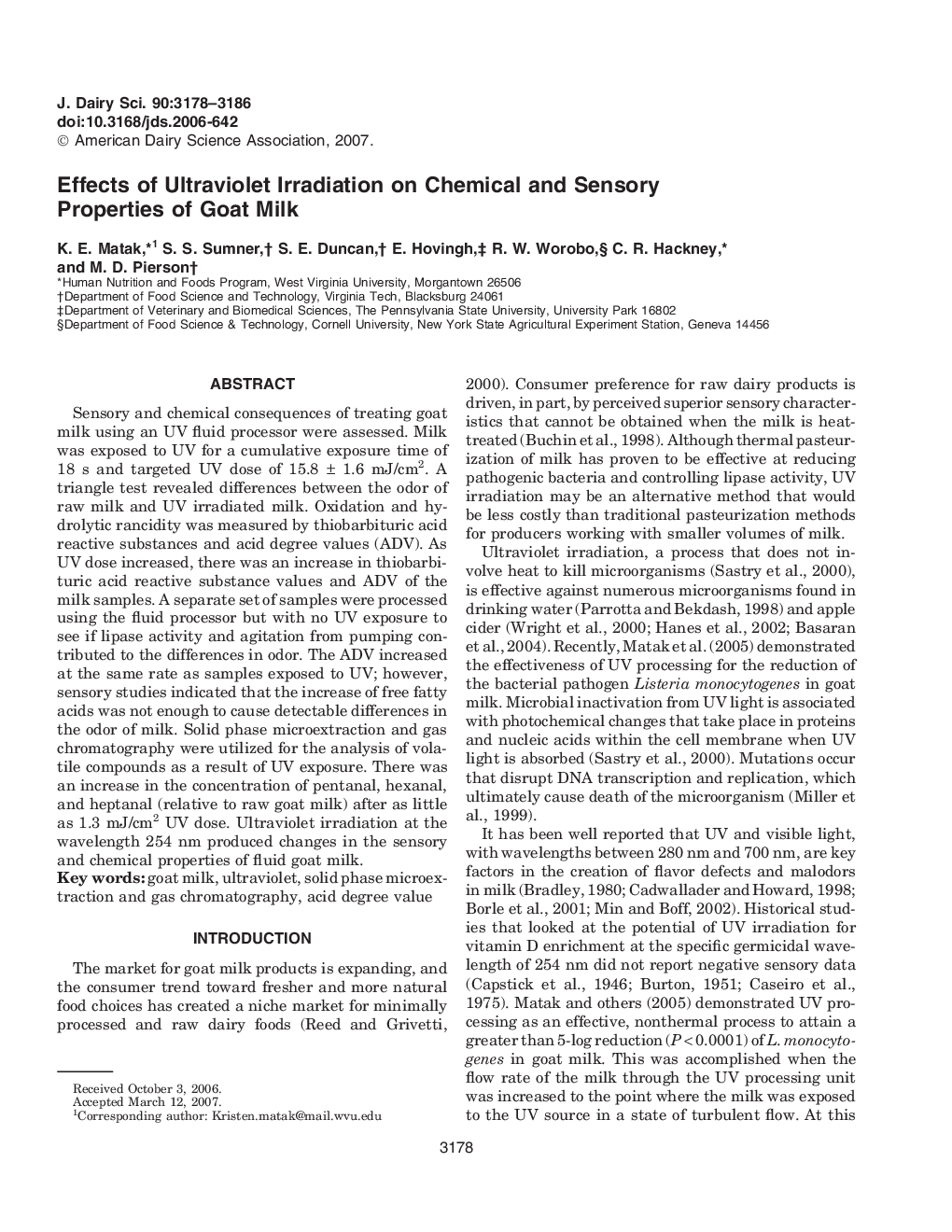| Article ID | Journal | Published Year | Pages | File Type |
|---|---|---|---|---|
| 2440780 | Journal of Dairy Science | 2007 | 9 Pages |
Abstract
Sensory and chemical consequences of treating goat milk using an UV fluid processor were assessed. Milk was exposed to UV for a cumulative exposure time of 18 s and targeted UV dose of 15.8 ± 1.6 mJ/cm2. A triangle test revealed differences between the odor of raw milk and UV irradiated milk. Oxidation and hydrolytic rancidity was measured by thiobarbituric acid reactive substances and acid degree values (ADV). As UV dose increased, there was an increase in thiobarbituric acid reactive substance values and ADV of the milk samples. A separate set of samples were processed using the fluid processor but with no UV exposure to see if lipase activity and agitation from pumping contributed to the differences in odor. The ADV increased at the same rate as samples exposed to UV; however, sensory studies indicated that the increase of free fatty acids was not enough to cause detectable differences in the odor of milk. Solid phase microextraction and gas chromatography were utilized for the analysis of volatile compounds as a result of UV exposure. There was an increase in the concentration of pentanal, hexanal, and heptanal (relative to raw goat milk) after as little as 1.3 mJ/cm2 UV dose. Ultraviolet irradiation at the wavelength 254 nm produced changes in the sensory and chemical properties of fluid goat milk.
Related Topics
Life Sciences
Agricultural and Biological Sciences
Animal Science and Zoology
Authors
K.E. Matak, S.S. Sumner, S.E. Duncan, E. Hovingh, R.W. Worobo, C.R. Hackney, M.D. Pierson,
